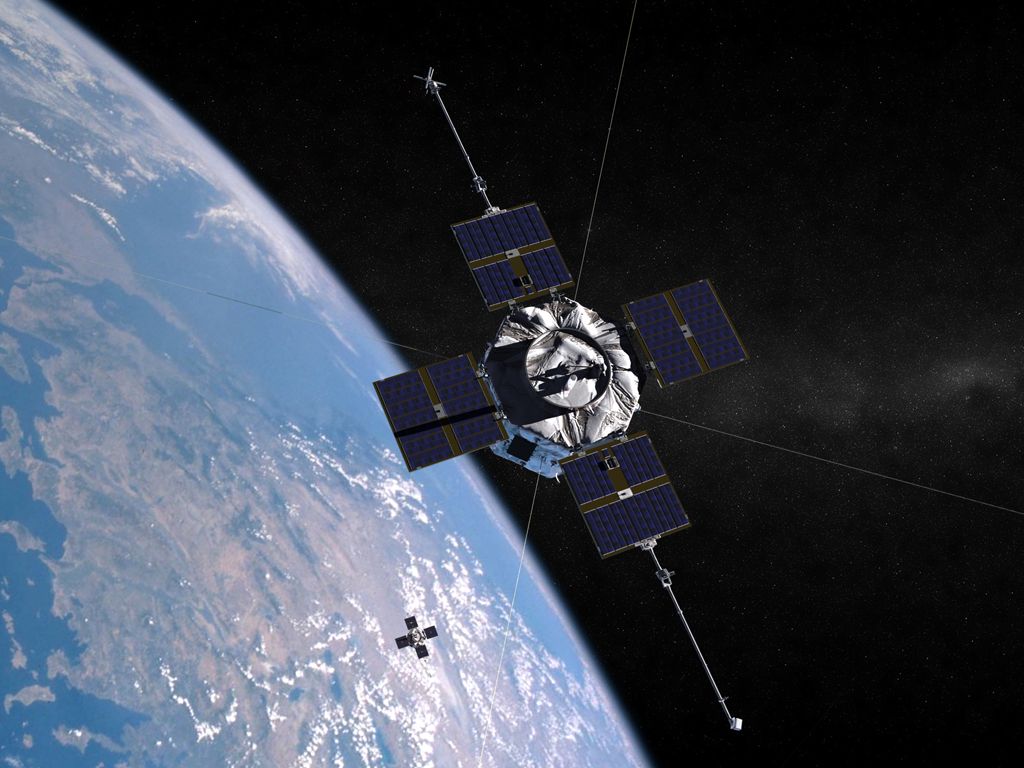Earth's Radiation Belts Surprisingly Dynamic, New Probes Find

Two new NASA probes that are flying through the belts of radiation surrounding Earth have found that these regions change more rapidly than previously thought.
The Van Allen Probes — a pair of twin spacecraft formerly known as the Radiation Belt Storm Probes — launched Aug. 30, and turned on their instruments two days later. Since then, the spacecraft have returned unprecedented measurements of the zones of charged particles, called the Van Allen radiation belts, around our planet. In these zones,trillions of high-energy particles released by the sun are trapped by Earth's magnetic field.
"We've all been just amazed at the tremendous results that we've seen even at this early date," deputy project scientist Nikki Fox of Johns Hopkins University's Applied Physics Laboratory said today (Dec. 4) during a press conference at the annual meeting of the American Geophysical Union in San Francisco.
The spacecraft have been orbiting less than 100 days, but have already sent back a wealth of data about these regions, which are difficult to measure, as the radiation there is damaging to most probes (the Van Allen vehicles are armored with thick aluminum shielding to protect their electronics). [Gallery: NASA's Radiation Belt Storm Probes]
One of the spacecrafts' findings is that conditions in the radiation belts change on a dime, with the particles there varying more in energy, in time and in spatial distribution than previously thought.
"What we're seeing is a much more dynamic, much more rapidly changing outer radiation belt than we expected to see," said Daniel Baker, principal investigator of the Van Allen Probes Relativistic Electron Proton Telescope instrument, who is the director of the Laboratory for Atmospheric and Space Physics at the University of Colorado, Boulder. "We're seeing both spatial and temporal structure that we simply didn't know existed."
The spacecraft have also measured the choruses of sound, in the form of radio waves, coming from Earth's magnetosphere — a noise the scientists have likened to the sounds of "alien birds."
Sign up for the Live Science daily newsletter now
Get the world’s most fascinating discoveries delivered straight to your inbox.
"Not only do you hear the chirps, the alien birds, but you hear cricket-like sounds in the background," said Craig Kletzing, principal investigator of the Van Allen Probes Electric and Magnetic Field Instrument Suite and Integrated Science instrument, based at the University of Iowa. "This is really a fantastic new measurement … We've never had that level of detail before."
And the insights provided by the Van Allen Probes are just getting started — the vehicles are slated for at least a two-year mission. Ultimately their findings will not just elucidate the science behind this part of Earth's environment, but could help protect future spacecraft from the damaging effects of the radiation there.
"The Van Allen Probes mission is really going to rewrite the books as to how to define and specify the Earth's environment before we launch" new missions, said Joseph Mazur, principal investigator of the Van Allen Probes Relativistic Proton Spectrometer at the Aerospace Corporation in Chantilly, Va.
This story was provided by SPACE.com, a sister site to Live Science. Follow Clara Moskowitz on Twitter @ClaraMoskowitz or SPACE.com @Spacedotcom. We're also on Facebook & Google+.












